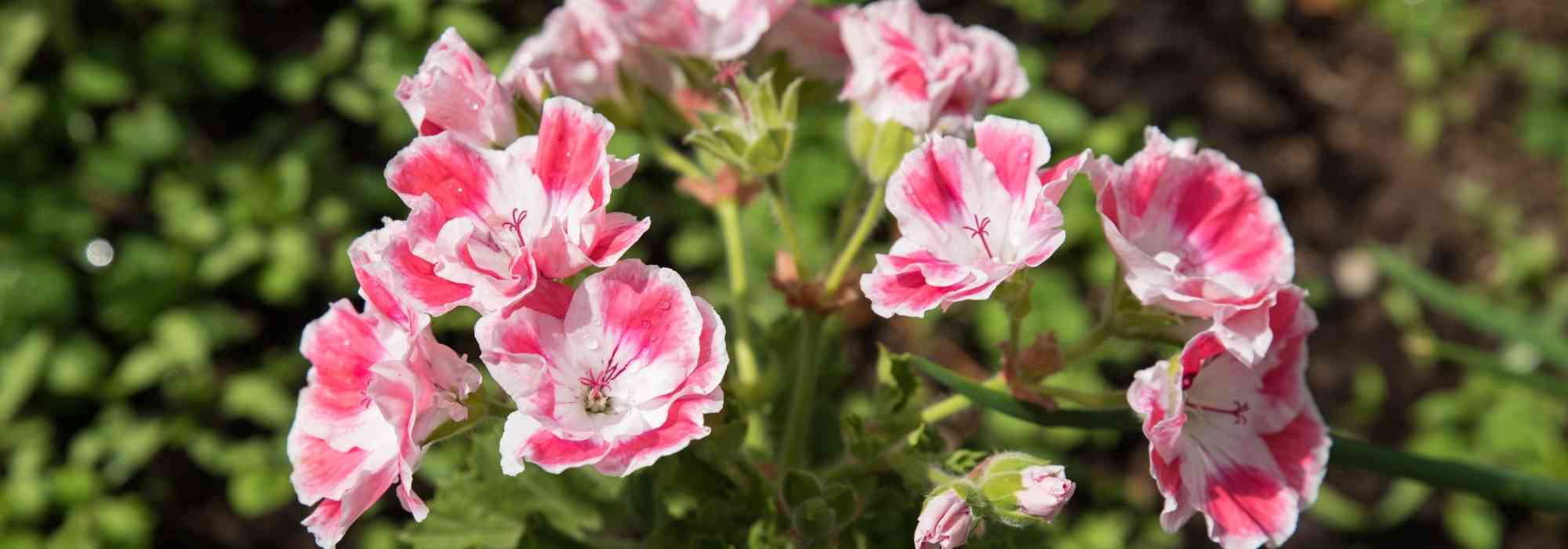
Choosing a pelargonium
Buying guide
Contents
Pelargonium is a non-hardy perennial plant, easy to grow and offering a wide range of colours, scents and decorative forms. Also called balcony geranium, it flowers from April to October, in hanging baskets, pots or in ground, on balconies, terraces or in gardens. Native to South Africa, it tolerates drought well and there are nearly 230 species and nearly 1,000 varieties! You’ll be spoilt for choice, whether you prefer cascades of trailing flowers, clouds of small butterfly-shaped flowers, or, for example, scented pelargoniums with a variety of fragrances. Here are our tips to help you choose your pelargoniums.
→ Discover our complete fact sheet on the Pelargonium
Depending on the colour of the flowers
Pelargoniums are highly prized for their abundant, long flowering, which can last up to six months, and for the range of their colours. With their five petals, they form small sprays of flowers that brighten your spaces.
White, red, pink, orange, salmon, yellow, violet, mauve, and even bicoloured or multicoloured, pelargonium flowers display a whole palette of warm, vivid — and sometimes rarer — shades.
Red-flowering pelargoniums
With their cheerful colours, red-flowering pelargoniums are kings of balconies. The most popular are ivy geraniums with cascades of flowers trailing all around the pot, such as Double ivy geranium ‘Ruby’ or Ivy geranium ‘Rainbow Red’.
There are also many pelargoniums with an upright habit, forming small shrubs, such as Zonal geranium ‘Fireworks Scarlet’ or Zonal geranium ‘Mrs Pollock’, with very decorative leaves.
For something more original, try the scented Pelargonium ‘Concolour Lace’ or the TwoinOne geranium ‘Dark Red’.
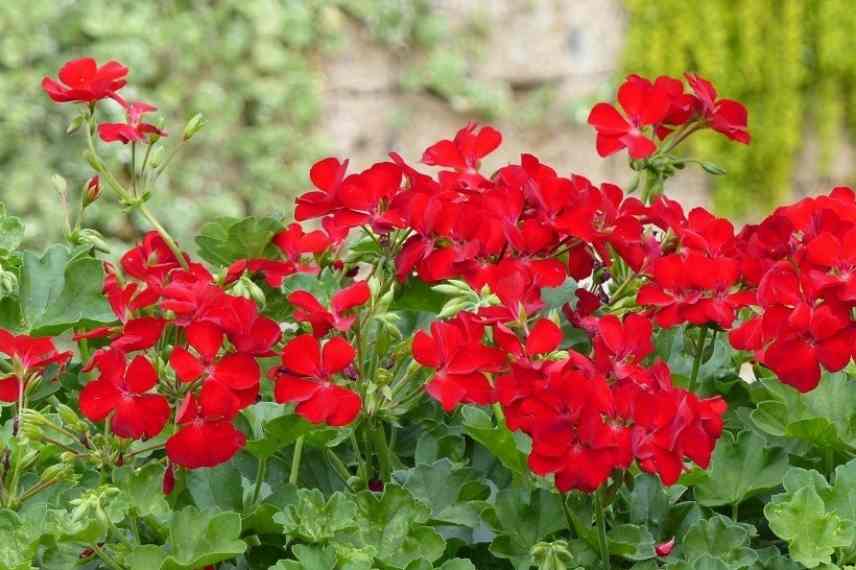
Pelargonium ‘Champion’
Pink-flowering pelargoniums
Also much prized, pink-flowering pelargoniums offer many shades and forms. Trailing types such as Ivy geranium ‘King of Balconies Noa’, upright types such as Pelargonium zonale ‘Candy Rose’ or scented ones such as Scented Pelargonium ‘Crispum Variegatum’ with lemon scent, they make life look candy-pink or fuchsia pink.
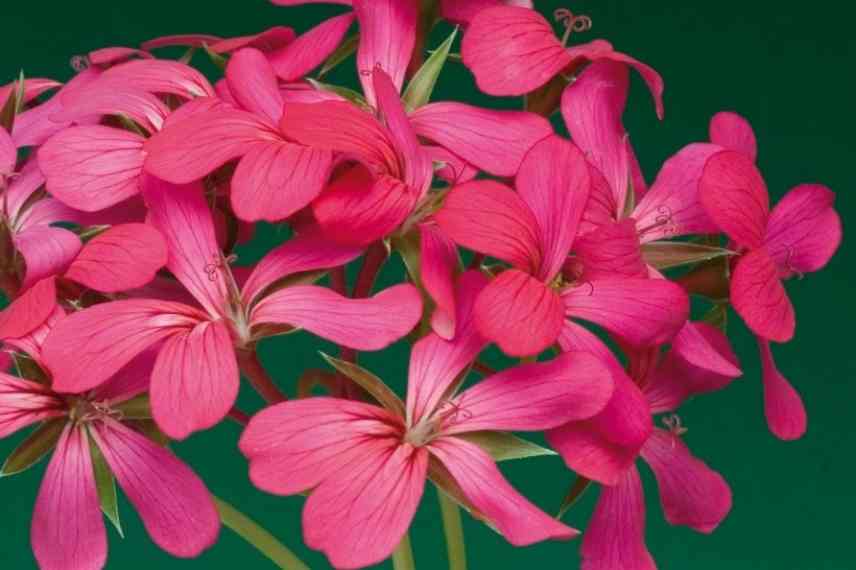
Pelargonium ‘Noa’
Pelargoniums with white, yellow, orange, mauve or violet flowers
You can also choose bright white flowers with TwoInOne geranium ‘White’, or rarer colours such as the yellow of the fancy Pelargonium ‘Gibbosum’, the orange of Zonal geranium ‘Franck Headley’, or the mauve of the Double ivy geranium ‘Amelit’.
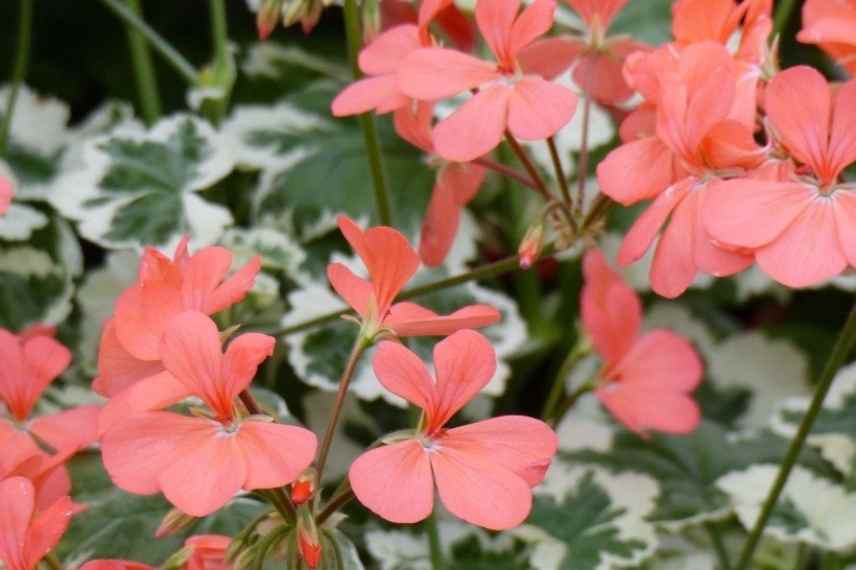
Pelargonium ‘Franck Headley’
Bicoloured or multicoloured pelargoniums
Very striking, bicoloured pelargoniums such as Pelargonium ‘Mosquitaway Louise’ or multicoloured types such as Zonal geranium ‘Inspire Mix’ add a distinctive, spectacular touch to balcony or garden.
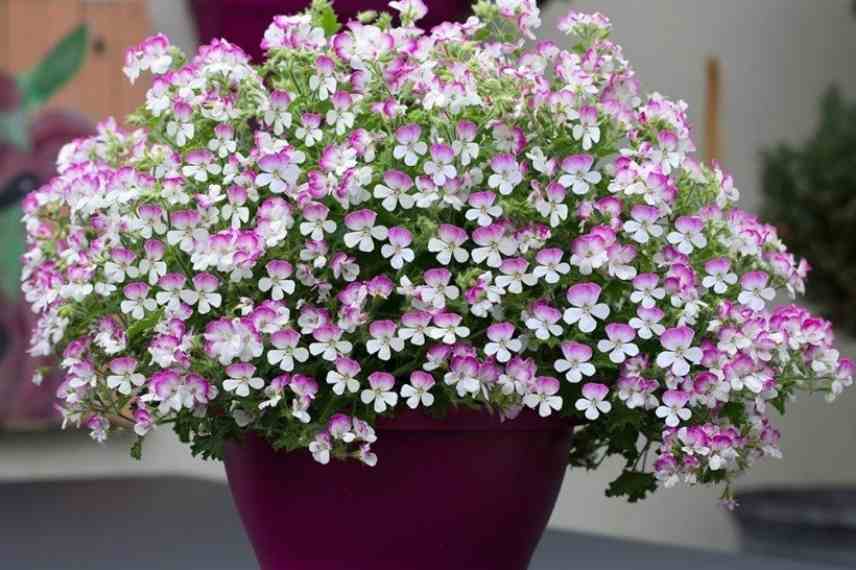
Pelargonium ‘Mosquitaway Louise’
Depending on flower size and shape
- Small, delicate trumpets or double flowers resembling mini button roses, Pelargonium flowers can also take a star-shaped form, producing a very striking graphic effect as with our Collection of 3 Fireworks star geraniums.
- Opening in small umbels, flowers can be single as is the case with the Single ivy geranium PAC Happy Face Amethyst, semi-double like the Zonal geranium Icecrystal or double as on the Double ivy geranium Rocky.
- They come in various sizes: large single or double flower heads from 5 to 13 cm like the Zonal geranium Appleblossom, which seems to bear small roses; a dense cloud of airy, butterfly-shaped flowers like the Ivy geranium Rainbow Pink Light, or more discreet flowers in favour of the leaves for scented pelargoniums such as Pelargonium graveolens.
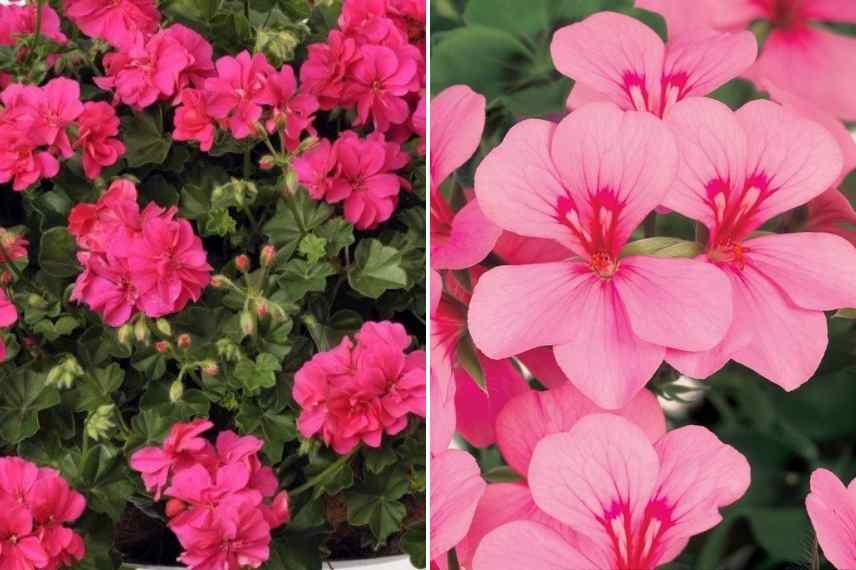
Pelargoniums ‘Double Rocky’ and ‘Rainbow Pink Light’
Discover other Pelargonium - Geranium
View all →Available in 1 sizes
Available in 1 sizes
Available in 1 sizes
Available in 1 sizes
Available in 1 sizes
Available in 1 sizes
Available in 1 sizes
Available in 2 sizes
Available in 2 sizes
Available in 1 sizes
Depending on the fragrance
Scents of rose, mint, citronella or even spices, pelargoniums can also scent balconies and gardens.
- Thus, potted Pelargonium Attar of Roses exudes a gentle rose fragrance. Scented Pelargonium ‘Chocolate’ with its minty scent adds a fresh touch of mint when brushed.
- To keep mosquitoes away, plant citronella-scented pelargoniums, such as Pelargonium ‘Lemon Fancy’ with its powerful citronella fragrance.
- Pelargoniums can also smell of spices, like Pelargonium cucullatum with a spicy scent, or even evoke maritime pine as with Pelargonium quercifolium.
- It is the leaves that contain essential oils and therefore the fragrances. In fact, for some pelargoniums, you can eat their leaves, for example in a fruit salad.
- You can also pair them with other scented plants to create multi-scented displays on your balconies or in your garden.
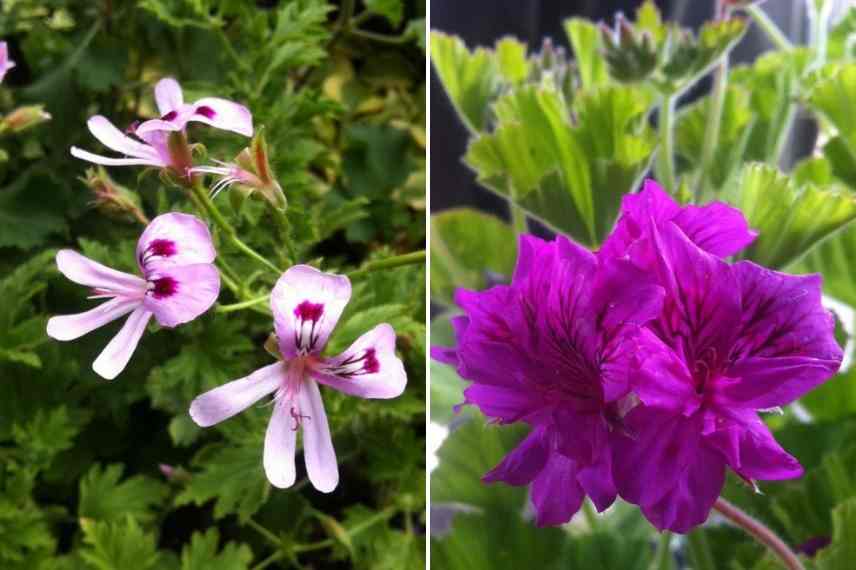
Pelargoniums ‘Lemon Francy’ and ‘Cucullatum’
Depending on exposure
Native to South Africa, pelargoniums love the sun. Most thrive in full sun, such as the Double Ivy Geranium BIG 5 Neon Pink or the Zonal Geranium Fireworks Pink. However, some can also be grown in partial shade such as the Pelargonium Angel Eyes Bicolor.

Pelargonium ‘Angel Eyes’
Depending on foliage
Pelargonium leaves display a range of colours: from light green to dark green, or variegated for a highly decorative effect.
Pelargoniums with green foliage
Pelargonium leaves turn light green as in the Pelargonium odorant Concolour Lace, mid green as in the Zonal pelargonium Flower Fairy Velvet, or dark green as in the Ivy pelargonium Moonflair Dark Pink.
Pelargoniums with variegated foliage
Leaves also show very decorative variegation as with zonal pelargoniums, whose leaves bear a darker semicircular zone. To get an idea, simply look for example at a Zonal pelargonium Fireworks Scarlet.
Other variegated foliage displays originality with white tones as on the Zonal pelargonium Wilhelm Langguth, reddish-brown on the Zonal pelargonium Vancouver, or even combining three colours with the superb Zonal pelargonium Mrs Pollock.
In pelargoniums, there are leaves of various shapes and therefore for every taste: rounded, lobed, pointed or crisped. To the touch, they can have different textures: glossy on ivy pelargoniums, downy or rough on scented pelargoniums, dentate on florist pelargoniums, also called “Regals” or large-flowered.
Finally, majority of pelargoniums bear evergreen foliage. However, some have deciduous leaves such as the Zonal pelargonium Flower Fairy Velvet.
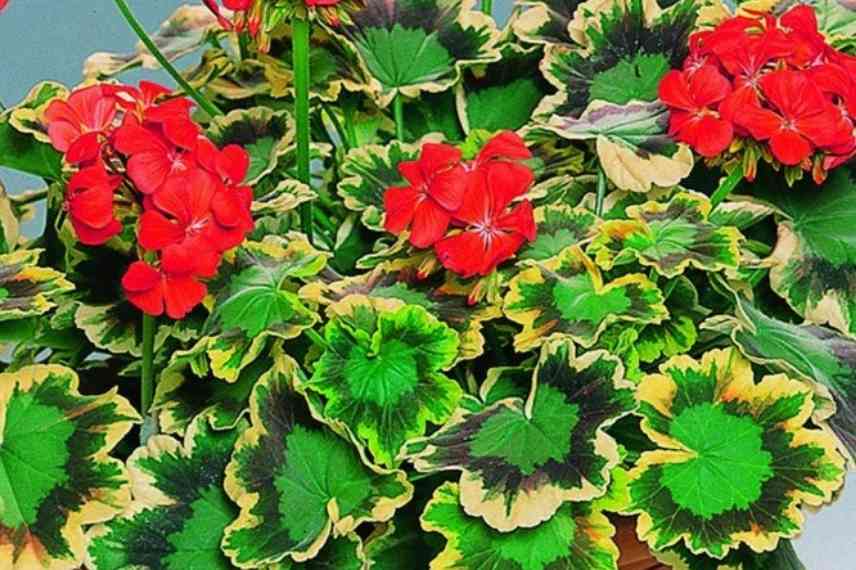
Pelargonium ‘Mrs Pollock’
Depending on flowering period and duration
Generally, pelargoniums flower from April to October and they are valued for their often abundant, even spectacular, flowering. Among the earliest are, for example, the Pelargonium TwoInOne White or the Pelargonium Pinkerbell and its large flowers, which flower both as early as April. Others flower as early as May, such as the bright red Pelargonium Cassiopeia or the pink Pelargonium TwoinOne Hot Pink Splash. Some even produce flowers as late as November for a late flowering, such as the Double ivy geranium Rouletta or the Ivy geranium Ville de Dresden.
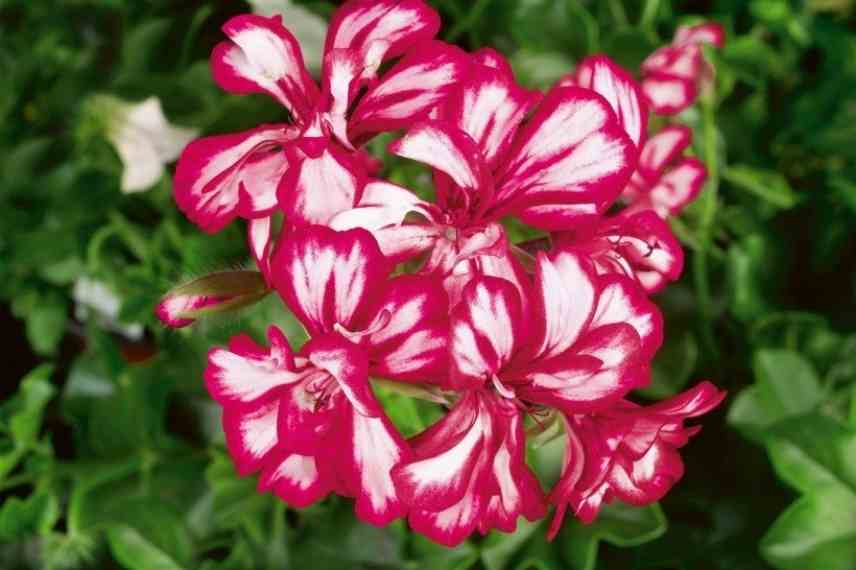
Pelargonium ‘Mexikanerin Rouletta’
According to hardiness
While most pelargoniums are frost‑tender and must be brought indoors for winter or used as annuals, some plants are more cold‑hardy than others and tolerate temperatures down to -5°C.
This is particularly the case for Geranium Scarlet, Pelargonium Paton’s Unique, scented Pelargonium tomentosum, scented Pelargonium quercifolium and scented Pelargonium cucullatum.
Depending on use and pruning
- Pelargoniums present different habit types: upright such as small flowering bushes with zonal Pelargoniums grown in borders or pots, or trailing with ivy geraniums often used in hanging pots or window boxes on balconies, like the well-known Pelargonium ‘Rouge Impérial’.
- They also create a very attractive effect in container displays, such as Pelargonium Mosquitaway Lizzy with its countless small bicoloured flowers.
- Pelargoniums are also perfect for growing in a greenhouse or conservatory, which will protect them from cold.
- On a balcony, use lemon- or citronella-scented varieties to repel mosquitoes, such as Pelargonium odorant ‘Lemon Fancy’.
- They can also be grown in open ground in borders, where you can play with combinations of colour and size.
- They grow quickly and their height can vary between 20 and 90 cm, which allows them to be grown in pots or window boxes. They can reach up to 1.2 m for the tallest, which thus form true small bushes.
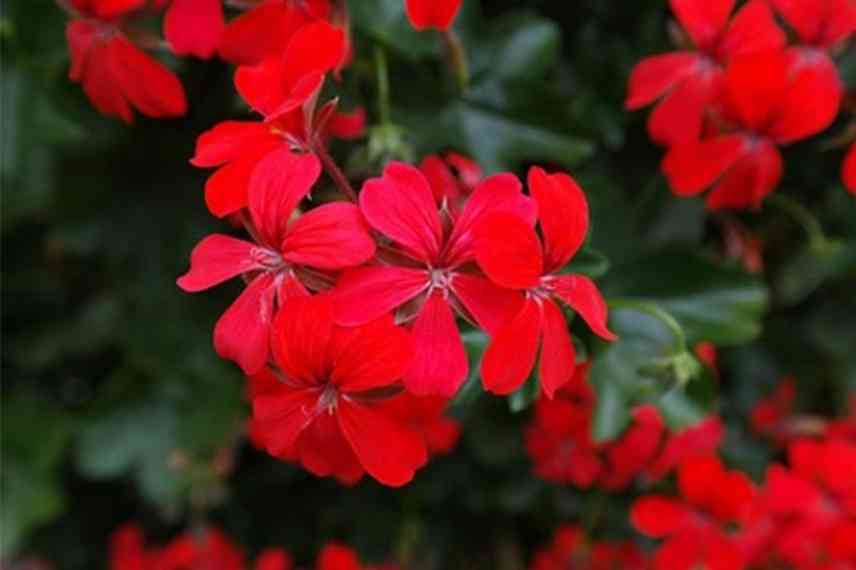
Pelargonium King of Balconies ‘Rouge Impérial’
- Subscribe!
- Contents
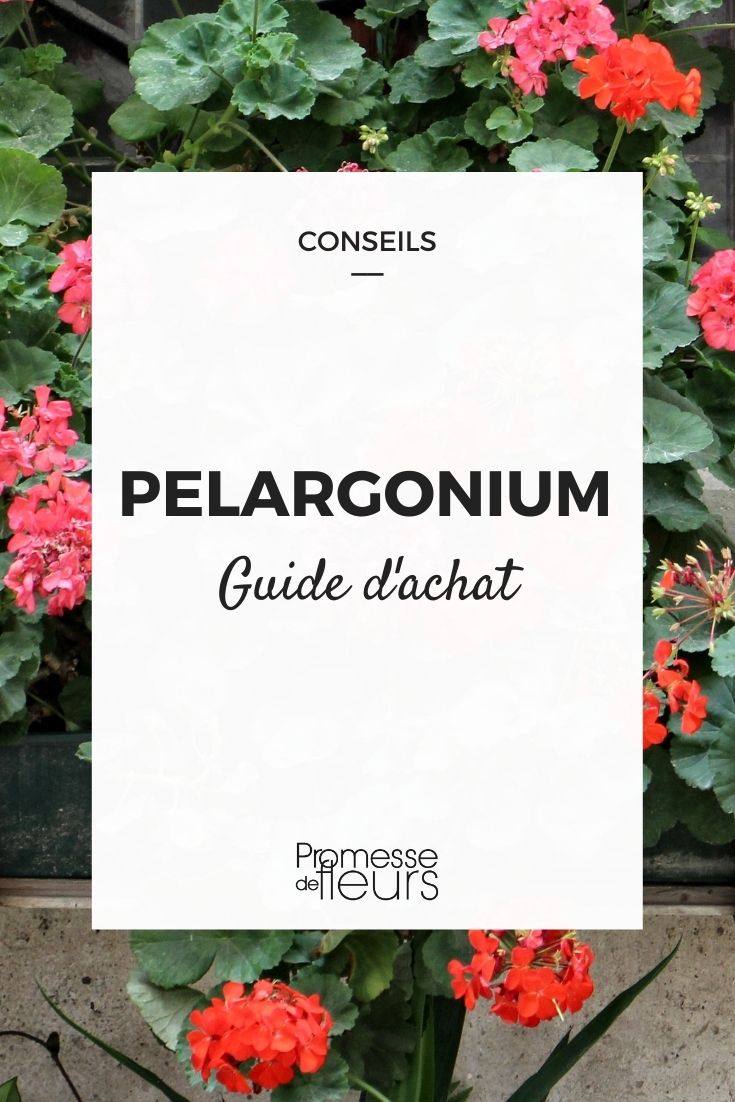































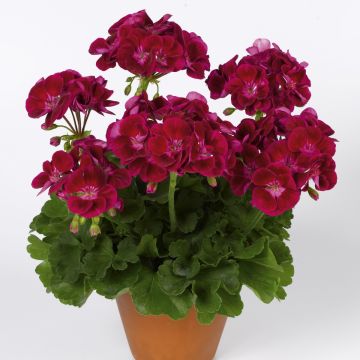
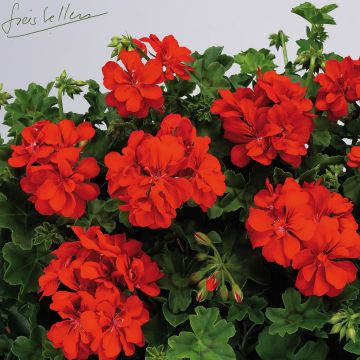
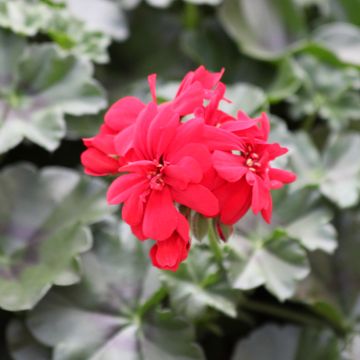
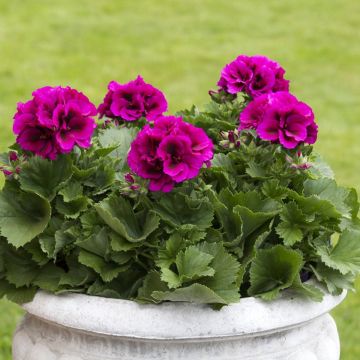
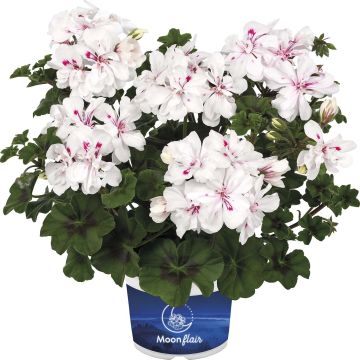
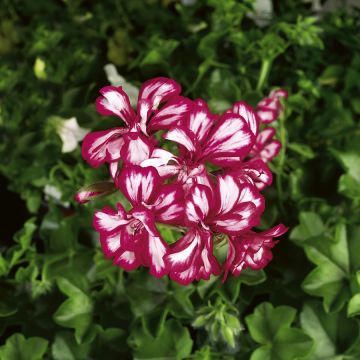
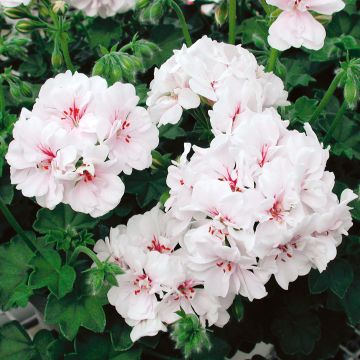
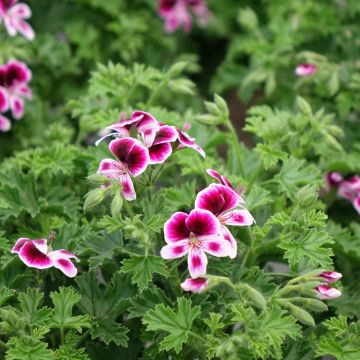
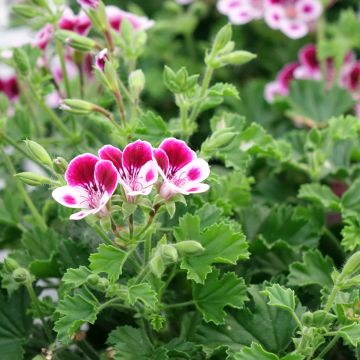
Comments